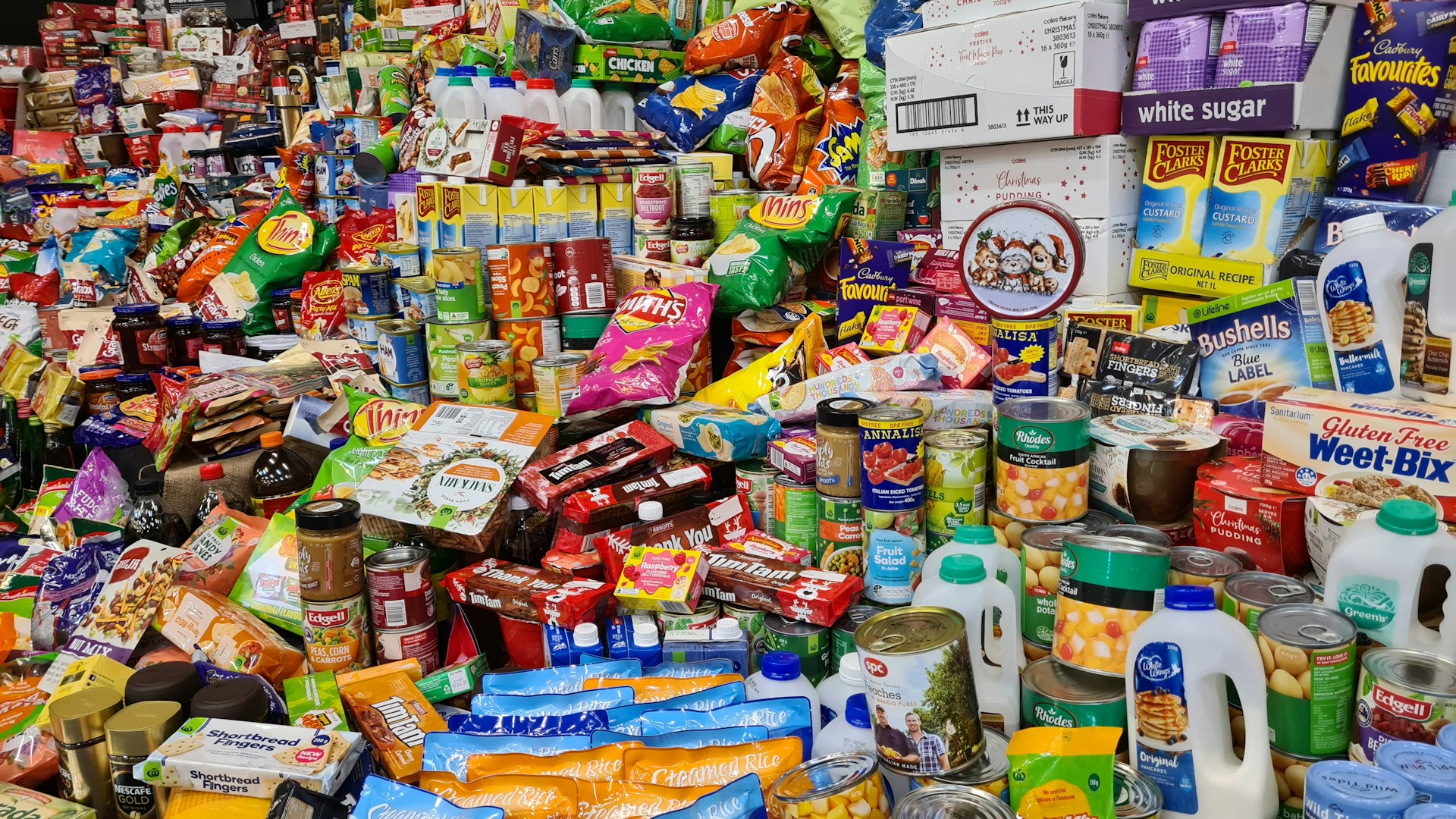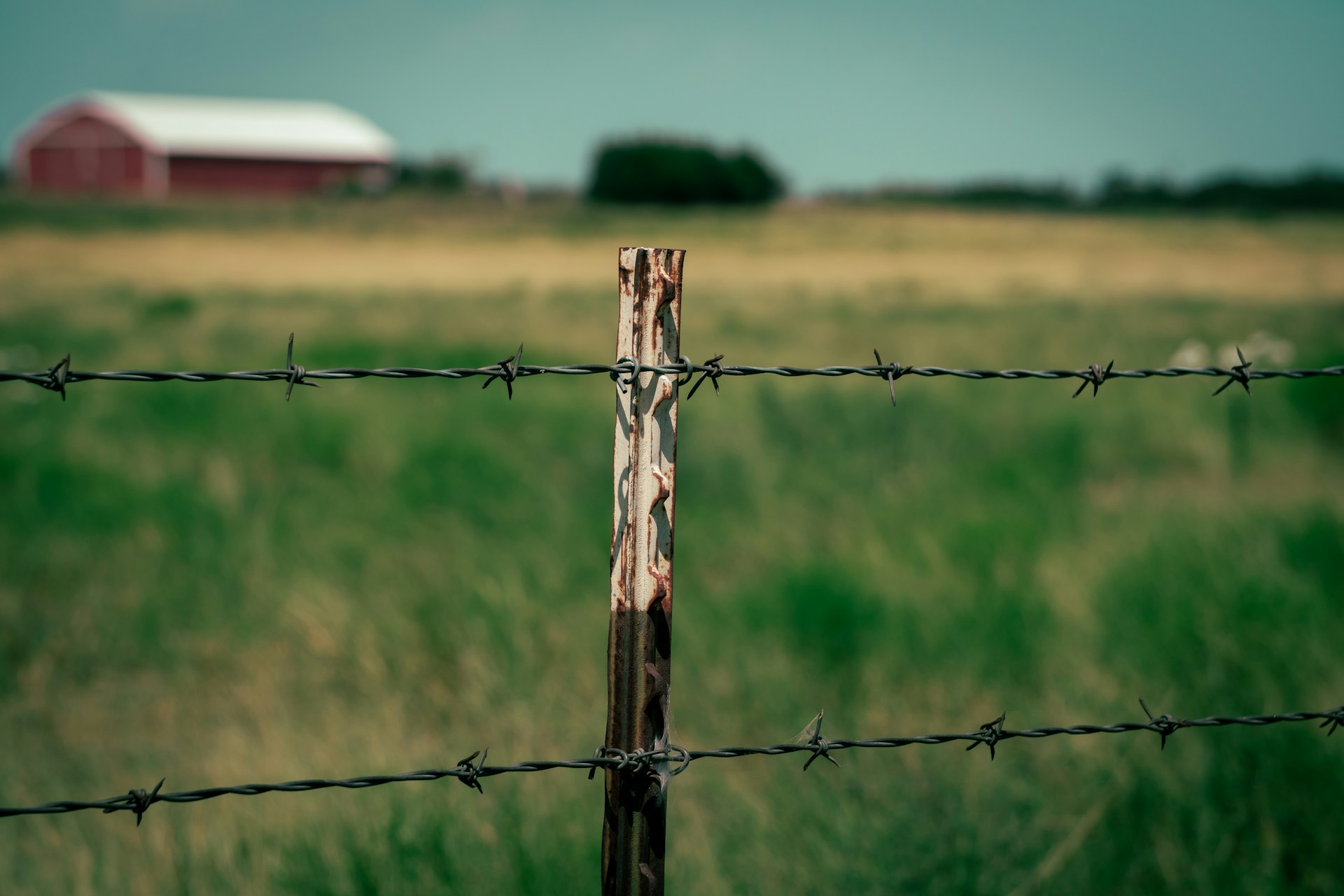Preparedness
Prepare for the Unpredictable: Essential Tips for Black Swan Events

History is often shaped by unexpected events—those rare occurrences known as black swan events that catch the world off guard and leave a significant impact. These events, such as the COVID-19 pandemic and the September 11th terrorist attacks, have reshaped societies and altered global landscapes.
While predicting the next black swan event is impossible, preparing for their potential consequences is essential. Nassim Nicholas Taleb popularized the term “black swan” to describe events that are often only understood in hindsight. Despite their unpredictability, we can take steps to mitigate their impact.
One of the looming threats is the increase in cybersecurity attacks. The stakes have never been higher, as evidenced by a December 2024 breach where Chinese state-sponsored hackers accessed the United States Treasury Department’s computer systems. According to the Treasury, “Hackers gained access to a key used by the vendor to secure a cloud-based service used to remotely provide technical support for Treasury Departmental Offices (DO) end users.”
The Department of Homeland Security’s 2025 Homeland Threat Assessment emphasizes the growing risk of cyberattacks on critical infrastructure, urging the need for enhanced cybersecurity measures. As we approach 2025, experts warn of more sophisticated cyberattacks that could compromise essential systems, including America’s electric grid.
The grid’s outdated infrastructure makes it particularly vulnerable. A 2024 report revealed that over 70% of U.S. utility companies experienced cyberattacks that year. Bad actors don’t need to shut down the entire grid; targeting key substations could lead to cascading failures, leaving millions without power.
To prepare, consider investing in alternative power solutions like solar generators, which can keep essential devices running during outages. Protect your electronics with EMP-proof gear to safeguard against electromagnetic pulses. Additionally, have backup communication methods, such as two-way radios or satellite phones, to stay connected with loved ones.
Natural disasters also pose significant threats. From volcanic eruptions to extreme weather events, the impact can be devastating. Scientists warn of an increased likelihood of catastrophic events, such as massive volcanic eruptions that can disrupt global air travel and lead to phenomena like volcanic winter.
To prepare for natural disasters, build emergency kits with essentials like water filtration systems, emergency food, and first aid supplies. Fortify your home by sealing windows and reinforcing doors to withstand extreme weather. In hurricane-prone areas, consider storm shutters, and in wildfire-prone regions, clear flammable vegetation around your property.
Having a bug-out plan is crucial. Sometimes, evacuation is the only option, so plan multiple escape routes and pack go-bags with essentials for each family member. Understand the specific risks in your area and tailor your preparedness strategies accordingly.
The threat of a “dirty nuke” being smuggled into an American port is another concern. Missing nuclear material from conflict zones raises fears of catastrophic attacks. Ports are vulnerable due to the volume of shipments and the difficulty in inspecting them all.
To prepare for such scenarios, consider having secure shelter options like underground bunkers or reinforced basements. These can provide protection during fallout situations.
Disease outbreaks remain a persistent threat. Recent events in the Democratic Republic of Congo highlighted the potential for new pandemics, with the WHO ready to impose lockdowns if necessary. Preparing for another period of isolation involves stocking long-term food supplies and learning self-reliance skills like growing your own food and making herbal remedies.
Ultimately, the only certainty in life is uncertainty. By taking proactive steps today, you can better prepare for whatever tomorrow may bring.
Let us know what you think, please share your thoughts in the comments below.

Off The Grid
10 Foods That Could Save Your Life When Grocery Shelves Are Empty

When disaster hits and grocery stores run out of stock, your survival depends on what’s already in your pantry. You don’t need fancy freeze-dried meals, just smart, long-lasting foods that keep you nourished, energized, and ready to adapt. Here are ten essentials that could literally save your life when everything else is gone.
1. Rice
A bag of rice can feed you for weeks. It’s compact, calorie-dense, and easy to cook with minimal fuel. Brown rice has more nutrients, but white rice stores longer, lasting up to 30 years in airtight containers.
2. Beans (Canned or Dried)
Protein and fiber are survival gold. Beans black, kidney, or lentils provide steady energy and can be eaten alone or combined with rice for a complete meal. Dried beans last longer, but canned beans are ready to eat if water or heat are limited.
3. Peanut Butter
High in calories, fat, and protein, peanut butter is one of the best survival foods on earth. It doesn’t need refrigeration and keeps for months after opening. A few spoonfuls a day can sustain you through hard times.
4. Oats
Oats require little water, cook fast, and provide long-lasting energy. They’re versatile—make oatmeal, energy bars, or add them to soups to stretch meals.
5. Canned Tuna or Chicken
Canned meats offer vital protein and omega-3s. They’re lightweight, long-lasting, and require no cooking. Rotate your stock every few years for freshness.
6. Honey
Honey never spoils. It can sweeten bland food, soothe a sore throat, and even treat wounds due to its natural antibacterial properties.
7. Powdered Milk
When fresh dairy is gone, powdered milk gives you calcium, protein, and essential vitamins. Mix with filtered water or use in cooking.
8. Salt
Salt preserves food, balances electrolytes, and adds flavor. In survival situations, it’s worth more than gold.
9. Canned Vegetables and Fruit
These provide hydration, vitamins, and variety. Drink the liquid inside it’s full of nutrients.
10. Energy or Protein Bars
Compact, lightweight, and packed with calories, they’re perfect for bug-out bags or quick energy during stressful moments.
Final Tip: Store your food in cool, dark places and rotate supplies regularly. When the shelves go bare, preparation turns panic into confidence and survival into just another day you’re ready for.
Preparedness
Zombie Apocalypse Survival Guide

A Realistic Plan for Staying Alive When the Dead Don’t Stay Dead
When society falls apart and the dead start walking, panic helps no one. Whether you’re facing a virus, invasion, or total breakdown of order, survival depends on preparation, strategy, and the right mindset. This guide covers what you need to stay alive when the world stops playing by the rules.
1. Mindset: Stay Calm, Stay Smart
Your brain is your most valuable weapon. Panic gets people killed faster than zombies do. Take a moment to breathe, assess your surroundings, and plan your next move.
Stay adaptable—no plan survives first contact with chaos. Every decision should balance risk and reward: don’t fight when you can hide, and don’t run when you can wait.
2. Finding Shelter
Your home is your first stronghold. Reinforce doors with furniture, nail down loose boards, and block low windows. Keep your lights off or covered at night to avoid drawing attention.
If you must relocate, choose high ground or structures that are defensible and easy to escape from warehouses, schools, or small rural buildings work best. Always know your exits and keep a backup escape route.
Pack a go-bag so you can leave at a moment’s notice:
- Flashlight with extra batteries
- First-aid kit and personal medications
- Water purification tablets or filters
- Non-perishable food and utensils
- Sturdy clothing, gloves, and boots
- Copies of IDs and emergency contacts
3. Food and Water
You can survive weeks without food but only a few days without water. Store bottled water and learn to purify natural sources with boiling, filtering, or tablets.
When it comes to food, go for lightweight, calorie-dense items: canned meats, beans, peanut butter, oats, rice, and trail mix. Rotate supplies so nothing expires, and learn basic preservation methods like drying or smoking meat.
4. Defense and Safety
Weapons aren’t just about fighting they’re tools. A crowbar, machete, or shovel can open doors, build barricades, and protect you when needed. Avoid firearms unless you’re trained, as noise attracts attention.
Stealth beats strength. Move quietly, avoid crowds, and use the environment to your advantage. Keep your back to a wall and your escape route clear.
5. Forming Alliances
Survival is easier in numbers but only with the right people. Small, trustworthy groups work best. Divide roles: scavenger, medic, lookout, builder. Share resources but establish clear boundaries.
Communication is vital. Use hand signals, radios, or notes to stay connected. Plan rendezvous points in case your group gets separated.
6. Health and Endurance
Injuries or infections can end you faster than any zombie bite. Keep wounds clean, stay hydrated, and rest whenever possible.
Hygiene matters dirty hands lead to disease. If you’re low on medical supplies, learn basic first aid and herbal substitutes.
Exercise and mobility are survival assets. You don’t need to be a marathon runner, but stay fit enough to climb, lift, or sprint when needed.
7. Mental Survival
The apocalypse isn’t just physical it’s mental. Loneliness, fear, and exhaustion can break you. Keep a routine, talk to others, and give yourself small goals. A clear purpose keeps your mind sharp and your morale strong.
Hold onto your humanity. Help others when you can, but don’t let compassion cloud survival instincts.
8. Long-Term Survival
Once the initial chaos fades, rebuilding becomes the goal. Learn sustainable skills: farming, hunting, fishing, water collection, and mechanical repair. Technology will fail knowledge won’t.
Scout safe zones, set up a perimeter, and plan for future threats beyond zombies scarcity, rival groups, and the environment.
Final Thoughts
In the end, surviving a zombie apocalypse isn’t about brute strength it’s about resilience, awareness, and adaptability. Keep your head, trust your instincts, and move with purpose. The world may fall apart, but survival starts with you.
Preparedness
5 Ways to Embrace Homesteading No Matter Where You Live

In today’s fast-paced world, the dream of self-sufficiency and homesteading is becoming increasingly appealing. However, many people believe that a significant amount of land is necessary to embark on this journey. The truth is, homesteading is a mindset and lifestyle choice that can be adapted to any living situation. Whether you’re in a city apartment or on a sprawling rural property, there are steps you can take towards self-sufficiency. Let’s explore the various ways you can embrace homesteading, no matter your space constraints.
1. Urban Homesteading: Making the Most of Small Spaces
Living in an urban environment doesn’t mean you have to give up on homesteading dreams. Urban homesteaders are creative and resourceful, finding ways to incorporate self-sufficiency into their city lives. Consider raising bees on apartment rooftops instead of livestock, or invest in a community garden plot to grow your own produce. Herbs can thrive on windowsills, and local farmers’ markets are great for sourcing meat and other essentials. Even composting can be adapted with a simple countertop bin.
2. Suburban Homesteading: Backyard Opportunities
For those in suburban areas, backyard homesteading offers a chance to expand your self-sufficiency efforts. A small garden can provide fresh produce for your family, and if local regulations permit, you might even keep chickens for eggs. With a bit more space, you can transition from indoor to outdoor composting. Collaborating with neighbors to share resources, like purchasing a cow together, can also enhance your homesteading experience.
3. The 5-Acre Dream: A Balanced Approach
Owning around 5 acres is often seen as the sweet spot for homesteading. This amount of land allows for a diverse range of activities, from raising chickens, goats, and pigs to maintaining a garden and greenhouse. You can plant fruit trees, establish a mini orchard, and even create a pond for fish farming. This level of homesteading provides a balance between self-sufficiency and manageability.
4. Large-Scale Homesteading: The Full Experience
For those with 10 or more acres, the possibilities for homesteading are vast. With ample space, you can grow your own food, raise cattle, and even chop wood for heating. Additional buildings like barns, root cellars, and greenhouses can support a fully self-sufficient lifestyle. While this level of homesteading requires significant resources and commitment, it offers the most comprehensive self-sufficiency experience.
5. Tailoring Homesteading to Your Lifestyle
Ultimately, homesteading is about what it means to you personally. Whether it’s producing your own food, raising animals, or reducing reliance on commercial products, your homesteading journey is unique. Start by assessing your current space and resources. If you can’t grow a garden, visit local farmers’ markets. If you can’t keep chickens, consider beekeeping or sourcing honey locally. Embrace DIY projects like making your own cleaning products or soap, and sell your creations locally.
In conclusion, homesteading is not defined by the amount of land you have but by the steps you take towards self-sufficiency. Whether you’re in an urban apartment or on a large rural property, there are countless ways to incorporate homesteading into your life. By adapting your practices to your environment and resources, you can embark on a fulfilling journey towards self-sufficiency and sustainability. Remember, every step you take brings you closer to your homesteading dreams.
Let us know what you think, please share your thoughts in the comments below.
-

 Tactical2 years ago
Tactical2 years ago70-Year-Old Fends Off Intruder with Lead-Powered Message
-

 Tactical2 years ago
Tactical2 years agoVape Shop Employee Confronts Armed Crooks, Sends Them Running
-

 Preparedness1 year ago
Preparedness1 year agoEx-Ballerina’s Guilty Verdict Sends Tremors Through Gun-Owner Community
-

 Preparedness1 year ago
Preparedness1 year agoGood Samaritan Saves Trooper in Harrowing Interstate Confrontation
-

 Tactical2 years ago
Tactical2 years agoMidnight SUV Theft Interrupted by Armed Homeowner’s Retaliation
-

 Survival Stories2 years ago
Survival Stories2 years agoEmily’s 30-Day Experience of Being Stranded on a Desert Island
-

 Preparedness1 year ago
Preparedness1 year agoArizona Engineer’s Headless Body Found in Desert: Friend Charged
-

 Preparedness1 year ago
Preparedness1 year agoBoy Saves Dad from Bear Attack with One Perfect Shot